There is more to Malaysian B5 biodiesel than meets the eye!
Believe it or not. Read on…
Palm Biodiesel Is Not Clean or Green! The Malaysian B5 Biodiesel program is set to release even more carbon dioxide into the atmosphere than petroleum diesel intensifying global warming. But, it need not be. Tech savvy solutions are already available to confront the Carbon Footprint of Palm Oil, a base feedstock for the Biodiesel, and preserve the environment against global warming effects but the will to adopt appears to be entirely wanting.
From climate change aspect of the environment palm oil production is very damaging at present releasing millions of tonnes of carbon dioxide into the atmosphere yearly intensifying global warming. This is more than the carbon dioxide released from the coal fired power plants in the palm oil producing countries. The solution to rein in the carbon emissions lies at the palm oil mill. The abundant biomass by-product remaining after extracting the palm oil presents unique opportunity as a valuable resource to fight global warming. It contain massive amount of clean energy! This clean energy when utilised efficiently and productively can offset carbon emissions in the plantations and bring down the carbon footprint of palm oil to significant low levels.
The world is hungry for biofuels as a ‘greener’ and ‘cleaner’ alternative to fossil fuels, but it is no guarantee of sustainability. The sustainability of biofuel production is becoming a key concern and a valid consideration for market penetration and market growth. This is due to potential negative elements involved in the production of biofuels such as loss of biodiversity, changing land use patterns, social economic impacts and greenhouse gas emissions. Unfortunately this is not common knowledge.
Conceded that palm oil from the Oil Palm (Elaeis guineensis jacq.) brings immense economic benefit to palm oil growing, and developing countries like Malaysia, Indonesia, Thailand, Philippines, Papua New Guinea, Nigeria, Cameroon, Colombia, Ecuador, Honduras, Costa Rica, Peru and Brazil and aids in poverty alleviation of these countries.
Palm oil has in recent years become the world’s most important vegetable oil when it comes to production volume. The global demand for palm oil is constantly growing in step with global population and per capita income. Demand for palm oil is growing driven by increasing human consumption as a food as well as attractive subsidies for biodiesel. This demand is likely to increase further in coming years. Currently approximately 50 million tonnes of palm oil per annum is produced globally. As of late, a significant quantity of palm oil is going into biodiesel production, so much so that presently the palm oil price has begun to move in tandem with daily Brent crude oil price.
While the increasing production of palm oil is welcomed for the prosperity it brings to developing countries, there is growing debate and concern about how the increasing palm oil production affects ecosystems, especially in the tropics. Thus, when one probes deeper all is not well with palm oil production from the environmental viewpoint.
In order to appreciate the climate change impacts one has to look at worst and best case scenarios for greenhouse gas emissions in the production of palm oil. The production of 1 tonne of palm oil causes more than 2.30 tonnes of carbon dioxide equivalent (CO2eq) of greenhouse gas emission in the worst scenario and about 0.65 tonnes of CO2eq in the best case scenario. The significant greenhouse gas (GHG) emission reduction in the best case scenario is achieved by capturing the highly GHG relevant emissions of methane in the milling process effluent (POME) at the palm oil mill. This clearly indicates that palm oil production methods using appropriate technologies applied in the milling process have dramatic bearing on GHG emissions. In the above comparison, it is assumed that land use change does not occur in either of the above scenarios.
When land use change is taken into account, the current carbon emission of Southeast Asian palm oil is estimated to increase correspondingly to about between 19.7 to 2.8 tonne CO2 equivalent per tonne of palm oil. This is dependent on assumptions, losses of biogenic carbon associated with ecosystems due to land use change, use of fertilisers, emission of CO2 due to the use of fossil fuels and the anaerobic conversion of palm oil mill effluent. The immense greenhouse gas emission in the production of palm oil (carbon footprint of palm oil) has dire consequences on global environment.
What is less understood is that palm oil production is causing aggravated consequences of climate change ever since increasing palm oil production is gradually being steered towards biodiesel production, in which case the already high carbon emission can become further intensified by carbon emissions attributable to indirect land use change (iLUC), as explained below.
Indirect Land Use Change (iLUC)
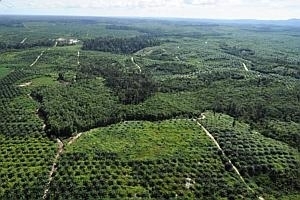 The concept of indirect land use change (iLUC) has recently emerged as an important issue for consideration as the unrelenting expansion of croplands displacing and forcing food production into new areas with its ensuing encroachment into forests and peatlands, takes place for ethanol or biodiesel production in response to the increased global demand for biofuels. The extra agricultural production that comes from clearing land to expand farms causes the release of carbon stored in the soil and in biomass (grasses, shrubs, trees and so forth) on the land in the new areas, as carbon dioxide. It is termed as “indirect” land use change because the expansion of agricultural area can occur far away from the physical location of croplands for biofuel production. On the other hand, where the croplands for production of biofuels directly encroach into forests and peatlands, the loss of carbon store therein is accounted for to the direct land use change in the usual manner.
The concept of indirect land use change (iLUC) has recently emerged as an important issue for consideration as the unrelenting expansion of croplands displacing and forcing food production into new areas with its ensuing encroachment into forests and peatlands, takes place for ethanol or biodiesel production in response to the increased global demand for biofuels. The extra agricultural production that comes from clearing land to expand farms causes the release of carbon stored in the soil and in biomass (grasses, shrubs, trees and so forth) on the land in the new areas, as carbon dioxide. It is termed as “indirect” land use change because the expansion of agricultural area can occur far away from the physical location of croplands for biofuel production. On the other hand, where the croplands for production of biofuels directly encroach into forests and peatlands, the loss of carbon store therein is accounted for to the direct land use change in the usual manner.
The indirect land use change impacts of biofuels (ethanol or biodiesel), is a measure of the unintended consequence of releasing more carbon emissions due to land-use changes around the world induced by the expansion of croplands for ethanol or biodiesel production in response to the increased global demand for biofuels.
In the case of palm oil, indirect land-use change occurs when palm oil feedstock for biodiesel production is sourced from traditional palm oil cultivation areas, thereby this demand can lead to the extension of palm oil cultivation for food and feed purposes into areas with high carbon stock such as forests, wetlands and peat land causing additional greenhouse gas emissions.
Consequently, and rightfully, where palm oil is used as feedstock for biodiesel production to displace fossil fuel, for example in use for transportation, the carbon emission attributable to indirect land use change (iLUC) is taken into account in evaluating the overall carbon footprint of the palm oil. When this indirect land use change effect is factored in, biodiesel based on current palm oil production process causes more carbon emissions than conventional petroleum diesel.
A further case in point pertinent to Malaysia is the large quantity of imported meat for human consumption, which requires expansion of vast areas of grazing land in the exporting country. Similarly, all poultry and animal feed for livestock production consumed in Malaysia are outsourced to other countries. Malaysia imports majority of its rice, wheat, sugar, soy bean, coconut oil, vegetables, fruits and milk while conserving its land mass for expansion of palm oil cultivation. Thus, besides sustainable development and food security issues, indirect land use change is a factor that cannot be discounted when evaluating the carbon footprint of Malaysian palm oil.
Palm Biodiesel Dilemma – Sustainability vs. Viable Fossil Fuel Replacement
The high carbon dioxide (CO2) emissions from fossil fuels make switching to low-carbon fuels a high priority to mitigate climate change. Biodiesel is a potential low-carbon energy source, but whether biodiesel offers carbon savings depends on how it is produced. The use of current palm oil as a feedstock for biodiesel is far from climate neutral. As can be seen in Figures 1 and 2 carbon emissions from the use of palm biodiesel is even higher than that of petroleum diesel. For unit conversion from CO2 kg/MJ to CO2 kg/kg when reading Figures 1 and 2 use a factor of 36.8 (MJ/kg for biodiesel).
As mentioned earlier, the reason palm oil-based biodiesel may be detrimental to the environment is that it generates a growing demand for oil palm crops, and in the process, displaces food production into new areas, and force forest clearing and draining of peatlands. The indirect land-use change (iLUC) can further result in enough carbon emissions to cancel out any theoretical savings from using biodiesel in place of fossil fuel.
Unsustainable palm oil biodiesel production is at loggerheads with nature. It is in view of this threat that recently the Environment Committee of the European Parliament voted in favour of accounting for scientifically proven ‘indirect emissions’ (iLUC) from biofuels in general and limited its use in the European Union.
The B5 biodiesel that is being introduced in Malaysia, with the noble objective of reducing the carbon emissions in the country, is no different from the biofuels considered in EU and cannot meet its objective, if traditional palm oil production methods continue to be used. Its use cannot claim to result in lower carbon emissions, let alone being carbon neutral.
Emissions from one litre of biodiesel based on current palm oil production process are estimated to be equivalent to burning up to two litres of diesel from fossil fuel. Ironically, the solution seems to be worse than the problem. There is therefore a need to curb carbon emissions of palm oil production for use as feedstock for biodiesel production. Only sustainable production of biodiesel will help it to reduce its carbon footprint and impact on global warming trends and thus prevent climate changes.
Tech Savvy Solutions to Confront Palm Oil Carbon Footprint
The solution to reduce the carbon footprint of palm oil or palm oil derived biodiesel lies in efficient and productive use of the renewable energy inherent in the uniquely abundant biomass residue from the palm oil milling process. The production of palm oil derived biodiesel can be brought to near carbon neutral.
By
- reducing the energy usage in the palm oil extraction process via technology solutions,
- optimising the harnessing of renewable energy in the palm oil mill biomass residue, and
- utilising the resulting additional renewable energy at the mill to displace fossil fuel derived energy elsewhere, whether it is electricity or industrial heat,
the consequential reduction in carbon emission elsewhere can be credited to palm oil, thereby automatically lowering the net carbon footprint of palm oil.
Efficient use of waste biomass of palm oil production at the mill for generating renewable energy to displace energy sourced from fossil fuel elsewhere can lead to large cuts in the emission of carbon-based greenhouse gases currently associated with the palm oil lifecycle. In other words, optimising the use of palm oil mill biomass residue can offer immediate and sustained GHG advantages.
Thus the key would be to find a new way to treat those biomass residues appropriately in a manner to free up the energy potential which in turn works to reduce the carbon footprint of palm oil.
The Roundtable on Sustainable Palm Oil (RSPO) Principles and Criteria have made it obligatory since the year 2005 for palm oil mills to optimise the use of renewable energy inherent in the biomass residue to meet sustainability criteria, i.e. reducing the carbon footprint of palm oil.
As a way of illustration, a 60 t/h palm oil mill has more than 50 MW of renewable thermal energy inherent in the palm oil production process biomass residue, namely,
Mesocarp Fibre, MF : 26 MW
Palm Kernel Shell, PKS: 18 MW
Biogas from POME: 6 MW
______________________________
Total energy potential: 50 MW
_______________________________
NB: Empty Fruit Bunch (EFB) is not factored in, in the above energy potential, as it is customarily recycled into the fields as organic fertilizers.
The Road Ahead – Sustainable Palm Oil Production
The future is not bleak. The palm oil mill holds potential solutions to reduce the carbon footprint of palm oil. There are available innovative technology solutions on the horizon to help greatly reduce energy usage in the palm oil mill process and at the same time unlock renewable energy in oil palm production process biomass residue. It may sound too good to be true but these means an integral energy plant of a 60 t/h palm oil mill can be capable of both meeting the heating needs of the milling process and producing about 6 MW of electricity by using a little as only 26 MW of the thermal energy from the biomass residue.
After deducting mill electricity consumption, an excess of up to 5 MW of electricity has the potential to be exported to the utility grid, generating additional revenue for the mill. Out of the 50 MW of thermal energy available from the biomass, the remaining 24 MW of thermal energy can be conserved for use elsewhere. This accounts for 36,000 tonnes per year of excess solid biofuel (Palm Kernel Shell and partially Mesocarp Fibre) that can be released for export to displace about 14 ktoe equivalent of fossil fuel oil for general industrial heating or generating an additional net 6 MW of clean electricity. The carbon savings from the use of this exported renewable energy (electricity and solid biofuel) can then be credited to the palm oil production.
The dramatic reduction in the carbon footprint can also be extended to compensate for a part of the carbon emissions attributable to land-use change that depend on individual plantations and are outside the mills’ influence, creating a possibility to reduce the carbon footprint of palm oil to near zero. Palm biodiesel derived from such a method of palm oil production can be brought close to carbon neutral bringing much needed and much anticipated climate change mitigation. Such future production of palm biodiesel compares well with ‘second generation’ biofuels, fuel from agricultural residues, which is increasingly being touted as a more sustainable alternative to first-generation biofuels, fuel from plants like the present biodiesel. Thus, future production methods of palm biodiesel hold the promise of reducing CO2 emissions over the full fuel cycle provided innovative production methods are employed.
Interestingly enough proven technologies are already available to realise said reduction of energy usage in the palm oil production process at the mill. Coupled with an efficient combined heat and power (CHP) plant at a palm oil mill, it is possible to achieve near zero carbon footprint.
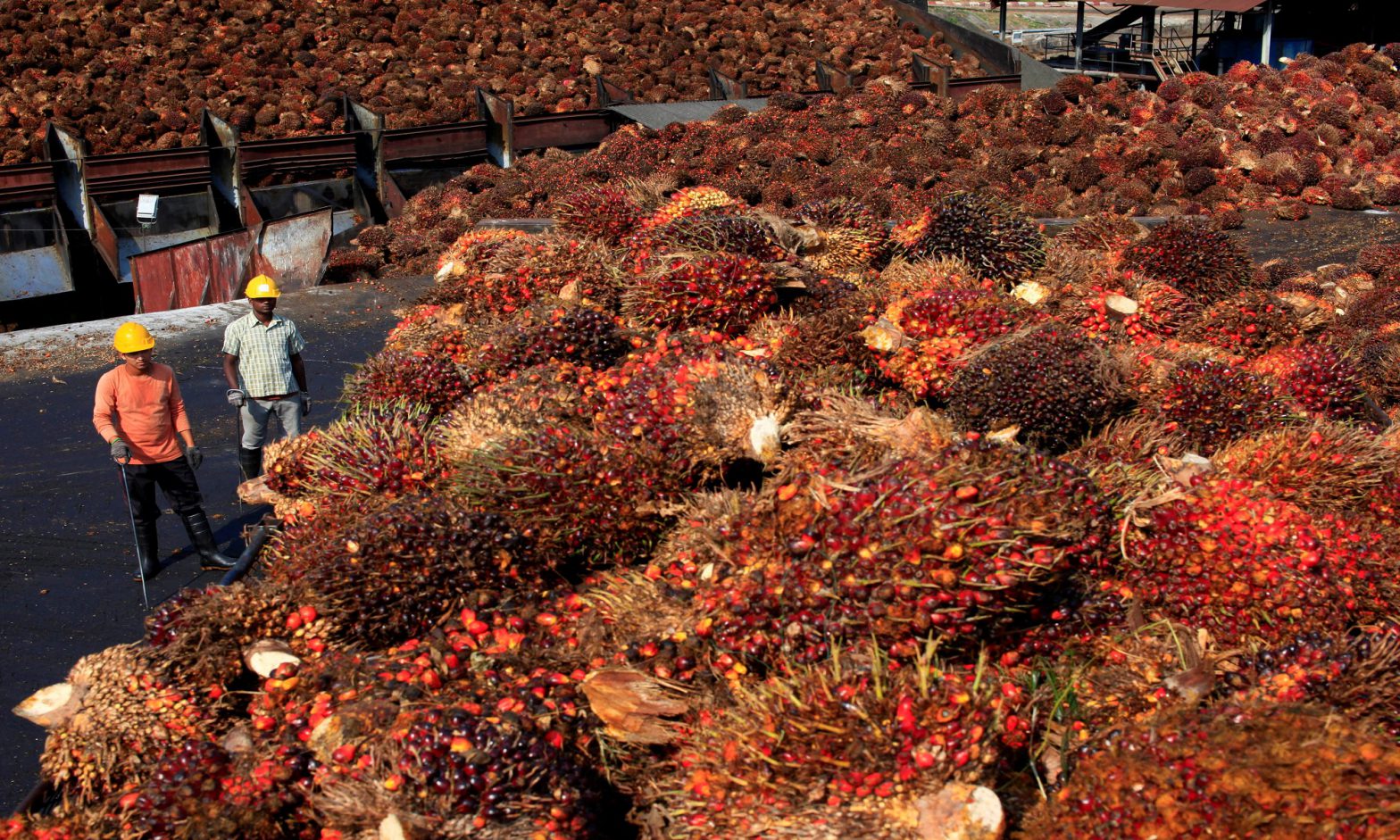

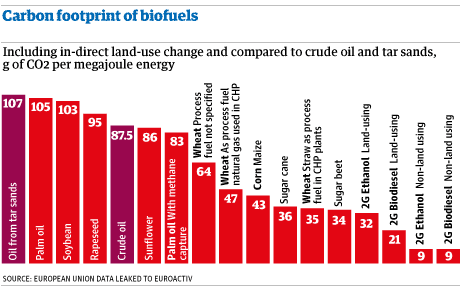
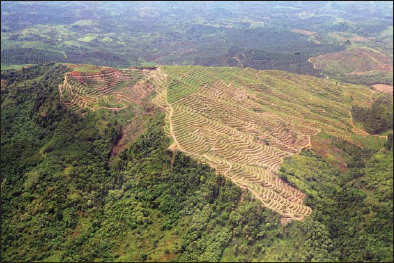
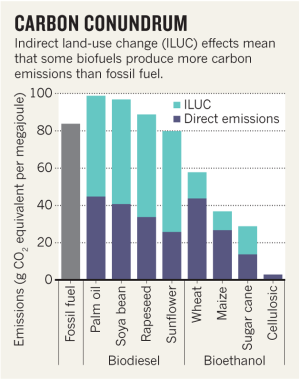
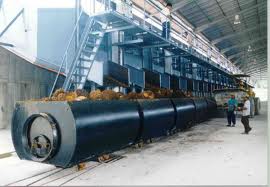
4 replies on “Carbon Footprint of Palm Oil and the Palm Biodiesel Dilemma”
Dear Sir,
I greatly appreciate your article on how to reduce carbon dioxide emissions. I will appreciate if you can send me full articles your have written on the subject. I am currently working on emissions from Palm oil plantation.
Thanks you for your anticipated cooperation.
may i take the other information ?
This info is very useful. Thanks for sharing knowledge
“the increasing palm oil production affects ecosystems, especially in the tropics.” can you give me an example?